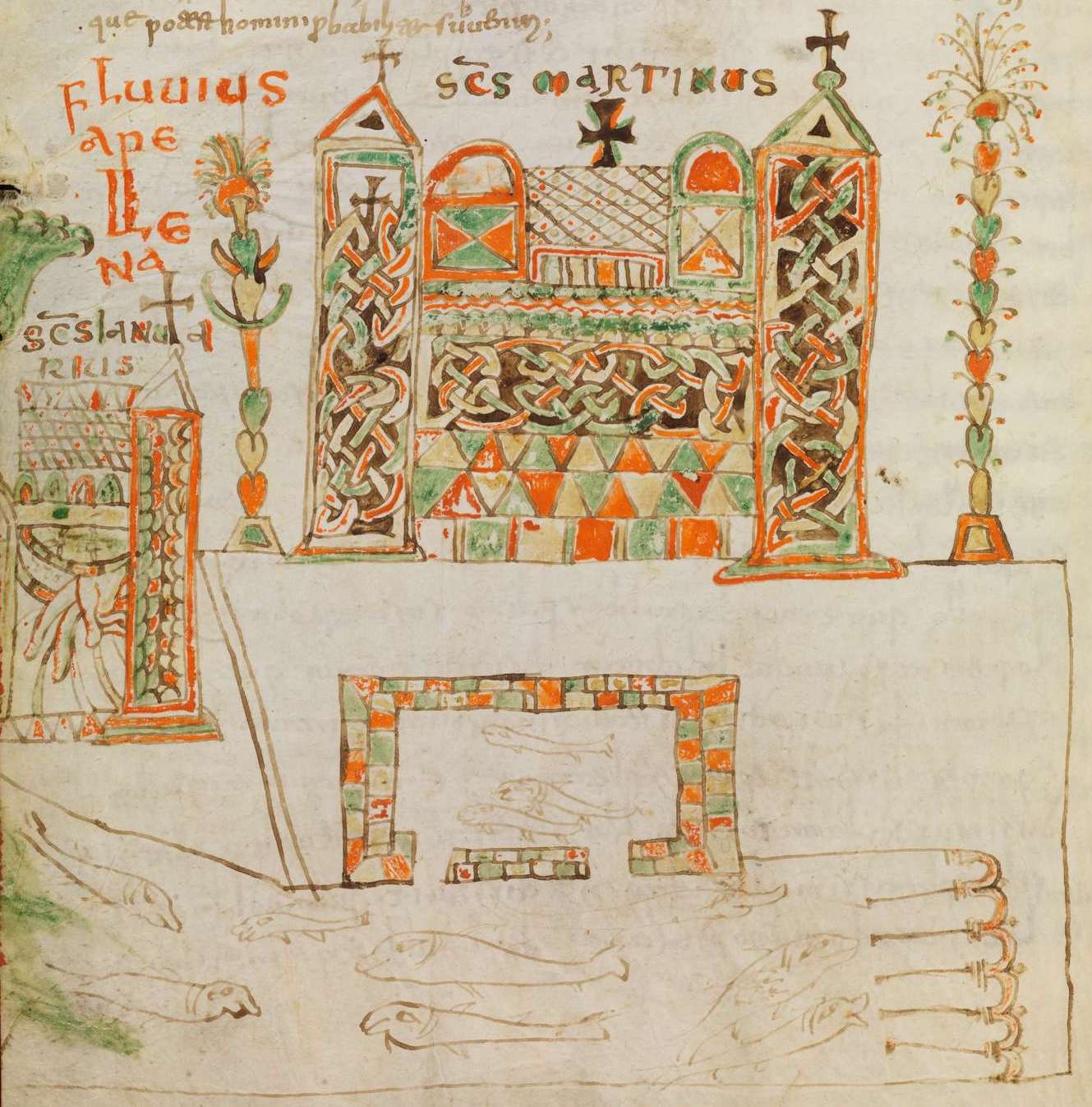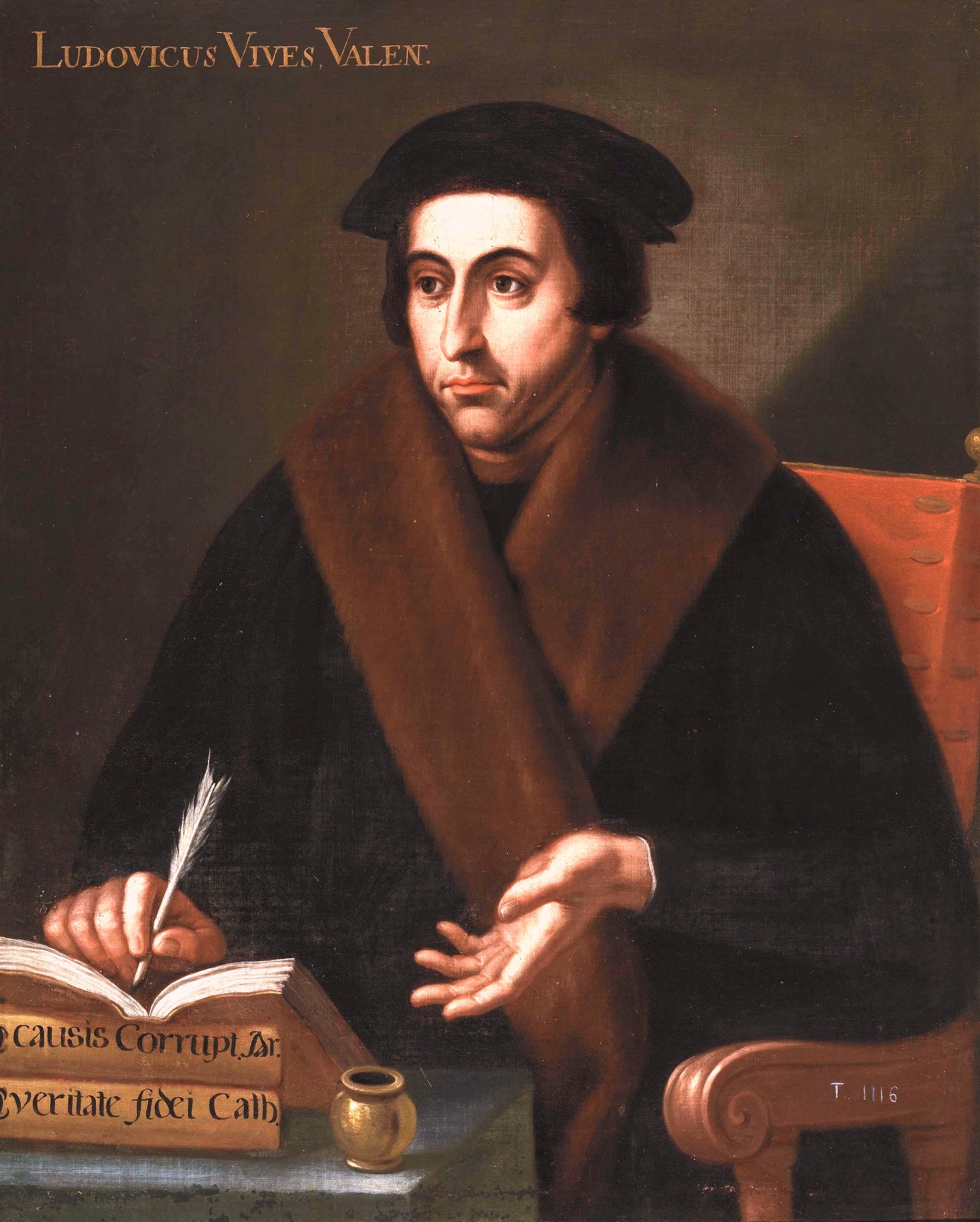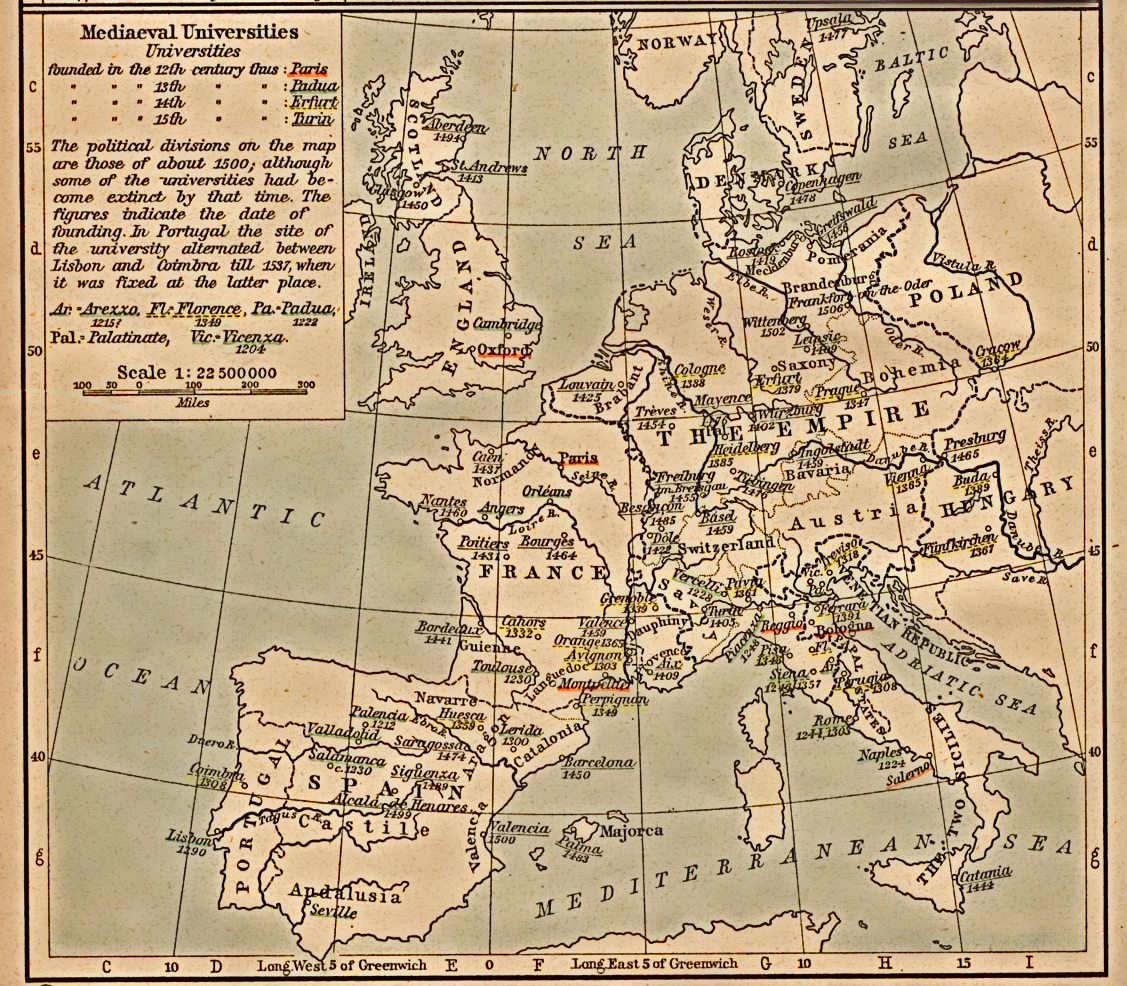|
Vivarium (monastery)
The Vivarium was a monastery founded around the year 544 by Roman statesman, Cassiodorus near Squillace, in Calabria, Italy. He also established a biblical studies center focused on studying the Bible as well as a library. It became a place where they worked on preserving Greek and Latin classical literature. Cassiodorus donated his land to the community of Squillace so that the ‘Vivarium’ could be built there. Having acquired the Roman noble title of '' patricius'' in 507, his family had become one of the most powerful in Italy. In 540, Cassiodorus retired from public life and moved into the monastery, ordering the Benedictine monks living there to learn about medicinal herbs and to copy various medical texts, supposedly including works of Galen, Hippocrates and of the pharmacist Dioscorides. When evaluating Cassiodorus' project, we must take into account the fact that the immense devastation caused by the Gothic War had endangered the survival not only of classical and pagan ... [...More Info...] [...Related Items...] OR: [Wikipedia] [Google] [Baidu] |
Bamberg
Bamberg (, , ; East Franconian German, East Franconian: ''Bambärch'') is a town in Upper Franconia district in Bavaria, Germany, on the river Regnitz close to its confluence with the river Main (river), Main. Bamberg had 79,000 inhabitants in 2022. The town dates back to the 9th century, when its name was derived from the nearby ' castle. Cited as one of Germany's most beautiful towns, with medieval streets and buildings, the old town of Bamberg with around 2,400 Timber framing, timber houses has been a UNESCO World Heritage Site since 1993. From the 10th century onwards, Bamberg became a key link with the West Slavs, Western Slavic peoples, notably those of Poland and Pomerania. It experienced a period of great prosperity from the 12th century onwards, during which time it was briefly the centre of the Holy Roman Empire. Holy Roman Emperor, Emperor Henry II, Holy Roman Emperor, Henry II was buried in the old town, alongside his wife Cunigunde of Luxemburg, Kunigunde. The town' ... [...More Info...] [...Related Items...] OR: [Wikipedia] [Google] [Baidu] |
Latin Language
Latin ( or ) is a classical language belonging to the Italic languages, Italic branch of the Indo-European languages. Latin was originally spoken by the Latins (Italic tribe), Latins in Latium (now known as Lazio), the lower Tiber area around Rome, Italy. Through the expansion of the Roman Republic, it became the dominant language in the Italian Peninsula and subsequently throughout the Roman Empire. It has greatly influenced many languages, Latin influence in English, including English, having contributed List of Latin words with English derivatives, many words to the English lexicon, particularly after the Christianity in Anglo-Saxon England, Christianization of the Anglo-Saxons and the Norman Conquest. Latin Root (linguistics), roots appear frequently in the technical vocabulary used by fields such as theology, List of Latin and Greek words commonly used in systematic names, the sciences, List of medical roots, suffixes and prefixes, medicine, and List of Latin legal terms ... [...More Info...] [...Related Items...] OR: [Wikipedia] [Google] [Baidu] |
Arnaldo Momigliano
Arnaldo Dante Momigliano (5 September 1908 – 1 September 1987) was an Italian historian of classical antiquity, known for his work in historiography, and characterised by Donald Kagan as "the world's leading student of the writing of history in the ancient world". He was a MacArthur Fellow in 1987. Biography Momigliano was born on 5 September 1908 in Caraglio, Piedmont. In 1936, he became Professor of Roman History at the University of Turin, but as a Jew, soon lost his position due to the anti-Jewish Racial Laws enacted by the Fascist regime in 1938, and moved to England, where he remained. After a time at Oxford University, he taught Ancient History at the University of Bristol where he was made a lecturer in 1947. He went to University College London and was elected Chair of Ancient History from 1951 to 1975. He was a Fellow of the Warburg Institute and supervised the PhD of Wolf Liebeschuetz. Momigliano visited regularly at the University of Chicago where he was name ... [...More Info...] [...Related Items...] OR: [Wikipedia] [Google] [Baidu] |
Syriac Language
The Syriac language ( ; ), also known natively in its spoken form in early Syriac literature as Edessan (), the Mesopotamian language () and Aramaic (), is an Aramaic#Eastern Middle Aramaic, Eastern Middle Aramaic dialect. Classical Syriac is the academic term used to refer to the dialect's literary usage and standardization, distinguishing it from other Aramaic dialects also known as 'Syriac' or 'Syrian'. In its West-Syriac Rite, West-Syriac tradition, Classical Syriac is often known as () or simply , or , while in its East-Syriac Rite, East-Syriac tradition, it is known as () or (). It emerged during the first century AD from a local Eastern Aramaic languages, Eastern Aramaic dialect that was spoken in the ancient region of Osroene, centered in the city of Edessa. During the Early Christian period, it became the main literary language of various Aramaic-speaking Christian communities in the historical region of Syria (region), Ancient Syria and throughout the Near East. As ... [...More Info...] [...Related Items...] OR: [Wikipedia] [Google] [Baidu] |
Paul The Persian
Paul the Persian or Paulus Persa was a 6th-century East Syriac theologian and philosopher who worked at the court of the Sassanid king Khosrau I. He wrote several treatises and commentaries on Aristotle, which had some influence on medieval Islamic philosophy. He is identified by some scholars with Paulus of Nisibis (d. 571 AD) and with Paul of Basra. A. V. Williams Jackson, ''Zoroastrian Studies'', Kessinger Publishing, 2003, According to Jackson, he was "a Christian who may have studied Greek philosophy in the schools of Nisibis and Gundeshapur". He is remembered for his writings in Syriac for his royal patron. These include his notes in Syriac on Aristotle's ''Logic'', in which he declares the superiority of science over faith. Life Paul the Persian is known from the 9th-century '' The Chronicle of Seert'' and from the ''Chronicon Ecclesiasticum'' of the 13th-century Jacobite historian Bar-Hebraeus. These sources indicate that he was born in Dershahr in Persia. Bar-Hebrae ... [...More Info...] [...Related Items...] OR: [Wikipedia] [Google] [Baidu] |
Junilius Africanus
Junillus Africanus (''floruit'' 541–549) was Quaestor of the Sacred Palace (''quaestor sacri palatii'') in the court of the Byzantine Emperor Justinian I. He is best known for his work on biblical exegesis, ''Instituta regularia divinae legis''. According to M.L.W. Laistner, Junillus' work was based on the writings of one of the teachers of the School of Nisibis, Paul the Persian, and because Paul had been influenced by the writings of Theodore of Mopsuestia, Junillus' ''Instituta'' helped make Western theologians familiar with the Antiochene school of exegesis. Susan Stevens identifies Junillus with a kinsman of the aristocrat Venantia who had the same name; she was a correspondent of Fulgentius of Ruspe Fabius Claudius Gordianus Fulgentius, also known as Fulgentius of Ruspe (462 or 467 – 1 January 527 or 533), was a North African Christian prelate who served as Bishop of Ruspe in what is now Tunisia, during the 5th and 6th century. He is vene ..., and possibly a member of ... [...More Info...] [...Related Items...] OR: [Wikipedia] [Google] [Baidu] |
School Of Nisibis
The School of Nisibis (, for a time absorbed into the School of Edessa) was an educational establishment in Nisibis (now Nusaybin, Turkey). It was an important spiritual centre of the early Church of the East, and like the Academy of Gondishapur, it is sometimes referred to as the world's first university. The school had three primary departments teaching: theology, philosophy and medicine. Its most famous teacher was Narsai, formerly head of the School of Edessa. The school was founded in 350 in Nisibis. In 363, when Nisibis fell to the Persians, St. Ephrem the Syrian, accompanied by a number of teachers, left the school. They went to the School of Edessa, where Ephrem took over the directorship of the school there. It had been founded as long ago as the 2nd century by the kings of the Abgar dynasty. When Ephrem took over the school, its importance grew still further. After the Nestorian Schism, when the Byzantine emperor Zeno ordered the school closed for its teachings of Ne ... [...More Info...] [...Related Items...] OR: [Wikipedia] [Google] [Baidu] |
University Of Valencia
The University of Valencia ( ), shortened to UV, is a public research university in Valencia, Spain. It is one of the oldest universities in Spain, and the oldest in the Valencian Community. It is regarded as one of Spain's leading academic institutions. The university was founded in 1499, and currently has around 55,000 students. Most of the courses are taught in Spanish, however their plan is to increase the number of courses available in Valencian and English as well. It is located in the Mediterranean Spanish baseline, in the city of Valencia which is the capital and most populous city of the autonomous community of Valencia and the third largest city in Spain, with a population of 829,705 in 2014. One of its campuses is located in the metropolitan area of Valencia, in the municipalities of Burjassot and Paterna. The current chancellor is María Vicenta Mestre Escrivá. History At the request of James I the Conqueror, Pope Innocent IV in 1246 authorized (by a Bull) ... [...More Info...] [...Related Items...] OR: [Wikipedia] [Google] [Baidu] |
Alain De Libera
Alain may refer to: People * Alain (given name), common given name, including list of persons and fictional characters with the name * Alain (surname) * "Alain", a pseudonym for cartoonist Daniel Brustlein * Alain, a standard author abbreviation used to indicate Henri Alain Liogier, also known as Brother Alain, as the author when citing a botanical name * Alain, the pseudonym used by Emile Chartier (1868–1951), French philosopher, journalist, essayist, pacifist, and teacher of philosophy. * Alain, Iran, a village in Tehran Province, Iran * Al Ain, a city in Abu Dhabi, United Arab Emirates ** Al Ain International Airport in the United Arab Emirates * Val-Alain, Quebec, village of 950 people in Quebec, Canada Other uses * 1969 Alain (1935 CG), a Main-belt Asteroid discovered in 1935 * ''Alain'' (crab), a genus of crabs in the family Pinnotheridae * Prix Alain-Grandbois The Prix Alain-Grandbois or ''Alain Grandbois Prize'' is awarded each year to an author for a book of poetry.< ... [...More Info...] [...Related Items...] OR: [Wikipedia] [Google] [Baidu] |
School Of Alexandria
The Catechetical School of Alexandria was a school of Christian theologians and bishops and deacons in Alexandria. The teachers and students of the school (also known as the Didascalium) were influential in many of the early theological controversies of the Christian church. It was one of the two major centers of the study of biblical exegesis and theology during Late Antiquity, the other being the School of Antioch. According to Jerome the Alexandrian school was founded by John Mark the Apostle. The earliest recorded dean was supposedly Athenagoras (176). He was succeeded by Pantaenus 181, who was succeeded as head of the school by his student Clement of Alexandria in 190. Other notable theologians with a connection to the school include Origen, Gregory Thaumaturgus, Heraclas, Dionysius "the Great", and Didymus the Blind. Others, including Jerome and Basil, made trips to the school to interact with the scholars there. Continuity with the ancient school is claimed by the ... [...More Info...] [...Related Items...] OR: [Wikipedia] [Google] [Baidu] |
Studium Generale
is the old customary name for a medieval university in medieval Europe. Overview There is no official definition for the term . The term ' first appeared at the beginning of the 13th century out of customary usage, and meant a place where students from everywhere were welcomed, not merely those of the local district or region. In the 13th century, the term gradually acquired a more precise (but still unofficial) meaning as a place that (1) received students from all places, (2) taught the arts and had at least one of the higher faculties (that is, theology, law or medicine) and (3) that a significant part of the teaching was done by those with a master's degree. A fourth criterion slowly appeared: a master who had taught and was registered in the Guild of Masters of a ' was entitled to teach in any other without further examination. That privilege, known as , was, by custom, reserved only to the masters of the three oldest universities: Salerno, Bologna and Paris. Their re ... [...More Info...] [...Related Items...] OR: [Wikipedia] [Google] [Baidu] |
Cenobitic Life
Cenobitic (or coenobitic) monasticism is a monastic tradition that stresses community life. Often in the West the community belongs to a religious order, and the life of the cenobitic monk is regulated by a religious rule, a collection of precepts. The older style of monasticism, to live as a hermit, is called eremitic. A third form of monasticism, found primarily in Eastern Christianity, is the skete. The English words ''cenobite'' and ''cenobitic'' are derived, via Latin, from the Greek words (, ), and (, ). The adjective can also be cenobiac () or cœnobitic (obsolete). A group of monks living in community is often referred to as a cenobium (Latin, from Greek ''koinobion''). Cenobitic monasticism appears in several religious traditions, though most commonly in Buddhism and Christianity. Origins The word ''cenobites'' was initially applied to the followers of Pythagoras in Crotone, Italy, who founded a commune not just for philosophical study but also for the "amicable s ... [...More Info...] [...Related Items...] OR: [Wikipedia] [Google] [Baidu] |




